Brendan Clary
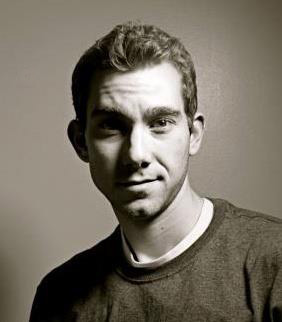
What is the first memory you have of yourself as an artist? How did you get started?
Almost all of my early memories as an artist revolve around superheroes. That was my thing. I think I was drawing comic books before I started elementary school.
When I was pretty young I remembered thinking that I would be a comic book artist some day, so I pulled all my stuff together and decided I better get used to the habit of drawing all day.
What events or people have encouraged you most in your path as an artist?
Friends, family, and teachers have all been very supportive of my art since an early age.
I remember kids at school used to pay me money for my drawings. I even had a teacher pay me twenty bucks to draw posters for her on the books we were reading as a class. I also remember the same teacher lecturing our class about not doodling on our homework because it made our assignments too messy, then in front of the class she told me that I was an exception because she loved looking at my drawings.
I’m grateful that there was such a positive response to my talent when I was so young—I’m sure it helped me develop confidence to pursue my art professionally.
My dad has always been very supportive as well. At one point he paid a local artist to give me private art lessons. Whenever I finish a painting he wants to take it around to all the neighbors to show off.
I’ve recently been very grateful for and influenced by the mentorship of the master painter William Whitaker. He has been kind enough to allow me to paint in his studio every week as he divulges the secrets of the universe (and painting) to me.
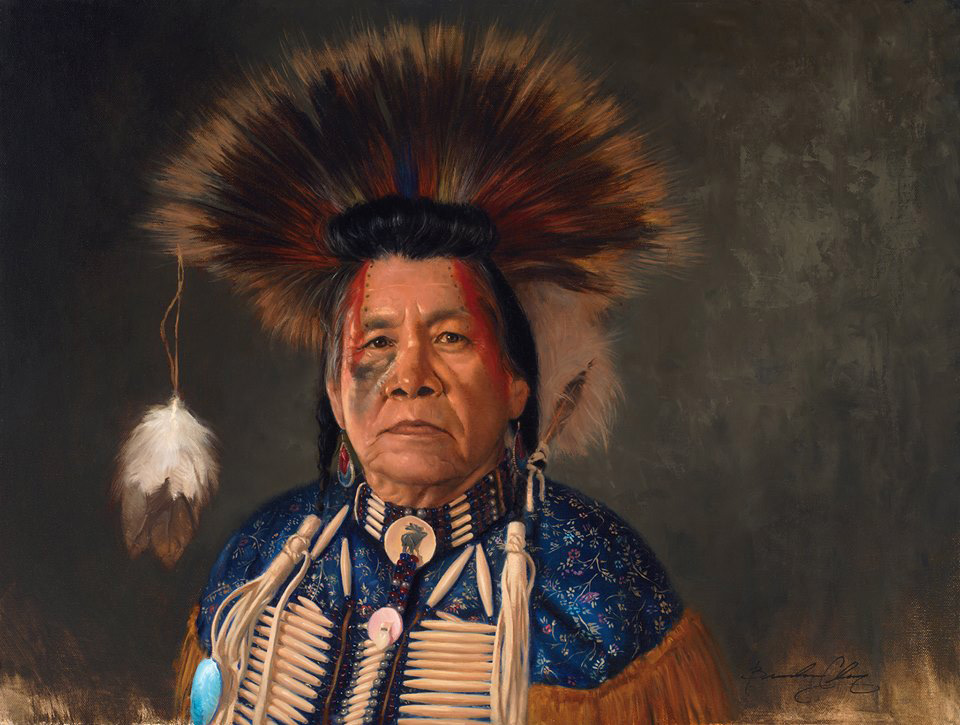
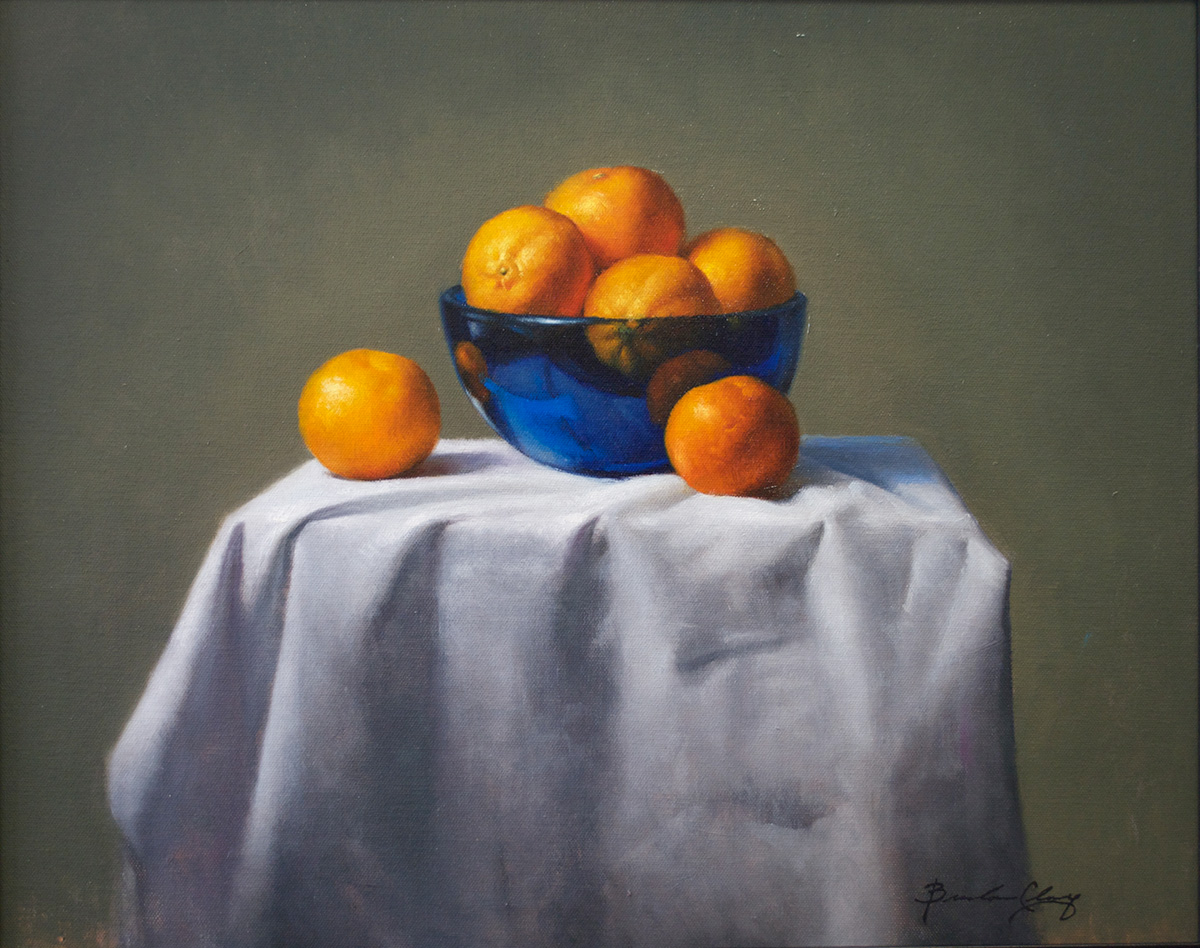
How have your influences, techniques, or outlooks changed over time as your art has developed?
As I mentioned, my initial interest in art was mainly focused on superheroes. While I still enjoy doodling Spider-Man every chance I get, my art vision, interests, and techniques have led me to a more traditional fine art approach in technique and subject. I lean much more toward traditional realism through oil paint. I am completely captivated by portraiture. I find myself painting eyeballs in my sleep. (It’s kinda freaky waking up to a painting staring at you that wasn’t there when you went to bed…)
Do you have a favourite media to work in?
Growing up, all I really knew was graphite and ink. But I do enjoy working in charcoal, and I absolutely love oil paint.
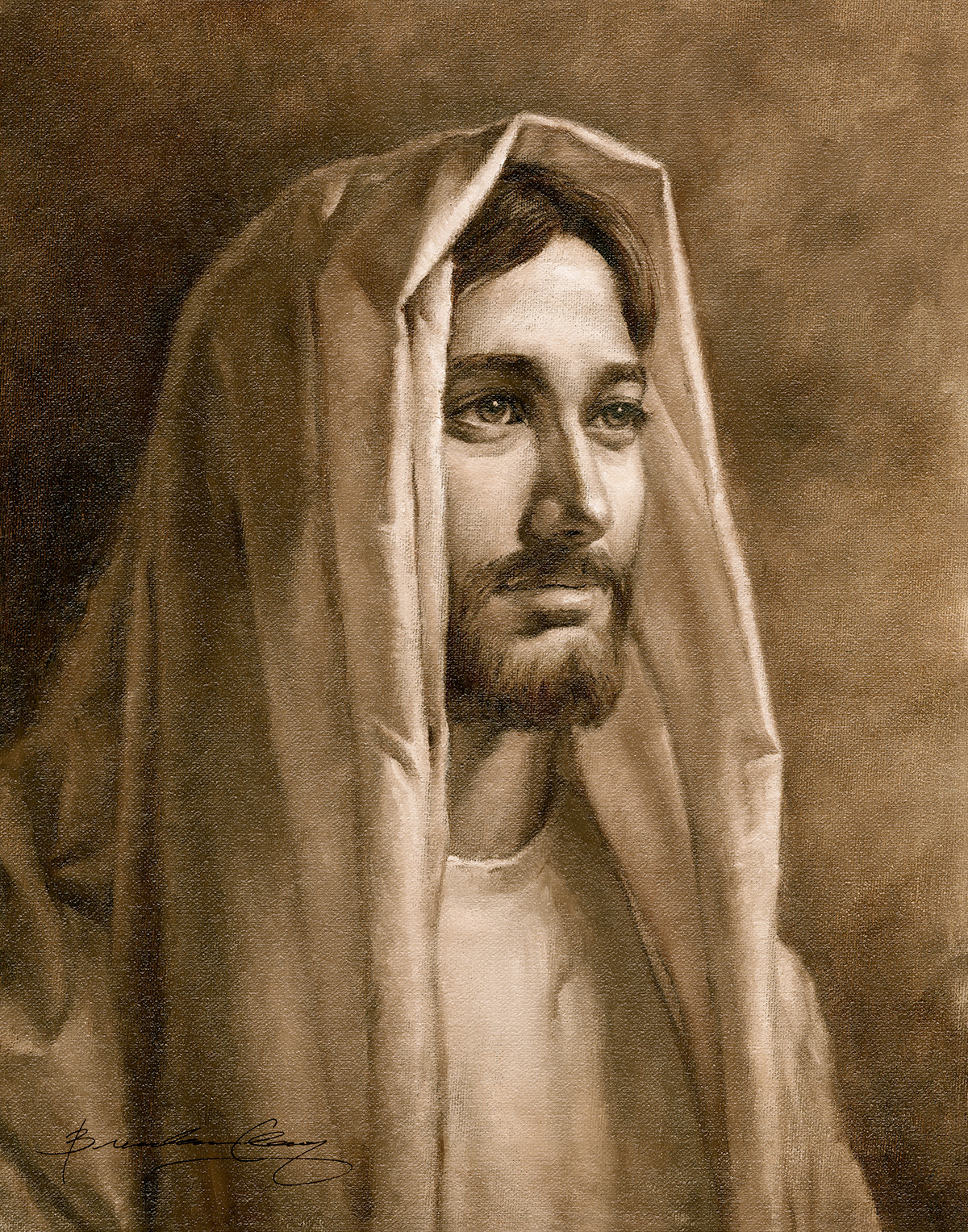
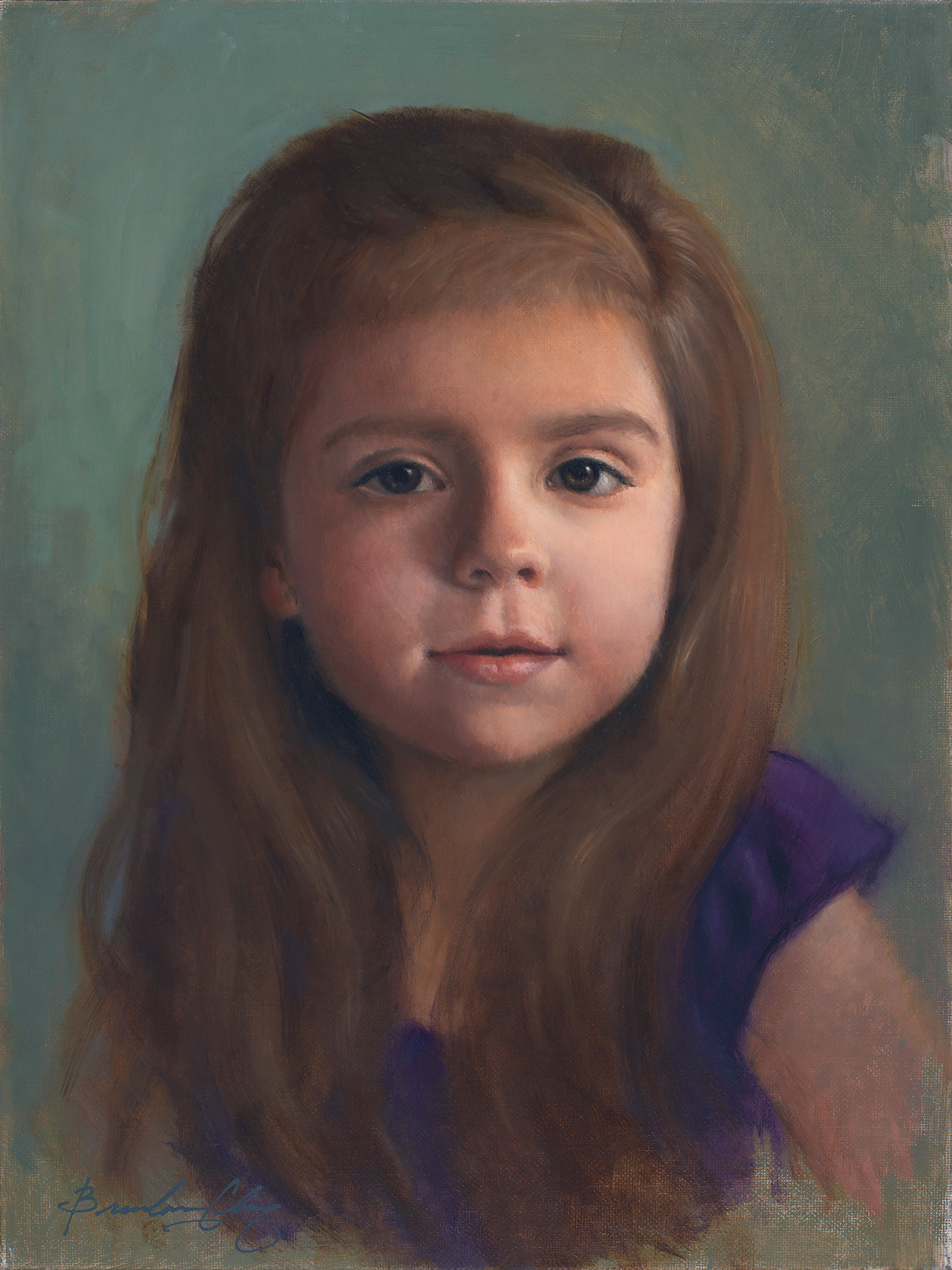
Describe your process—how do you organize all the reference photos, sittings, etc?
The process seems to be constantly changing for me, and certainly varies piece to piece. Sometimes I just feel like I have to paint something, so I start painting out of my head. But generally I love to work from life as much as possible. (Maybe because it makes me feel like a real artist or something…) Of course it is difficult to do everything from life, so I work from photos a lot. I have been building up a large library of photo references for portraiture, still life, and landscape. When the mood strikes me I dig through the library for something to work on.
For other pieces, I am more deliberate in my reference material. I will set up models and lighting the way I want to get the information I need to make a believable representation of the subject. I recently did a portrait of a very young girl who is terminally ill. The family didn’t have much reference to offer me, so I took my camera over to meet her and snapped hundreds of photos to work from. It was difficult because part of her disease has left her mostly blind and with little control of her motor skills. Fortunately some of the photos had exactly what I would have wanted if I could have painted her from life.
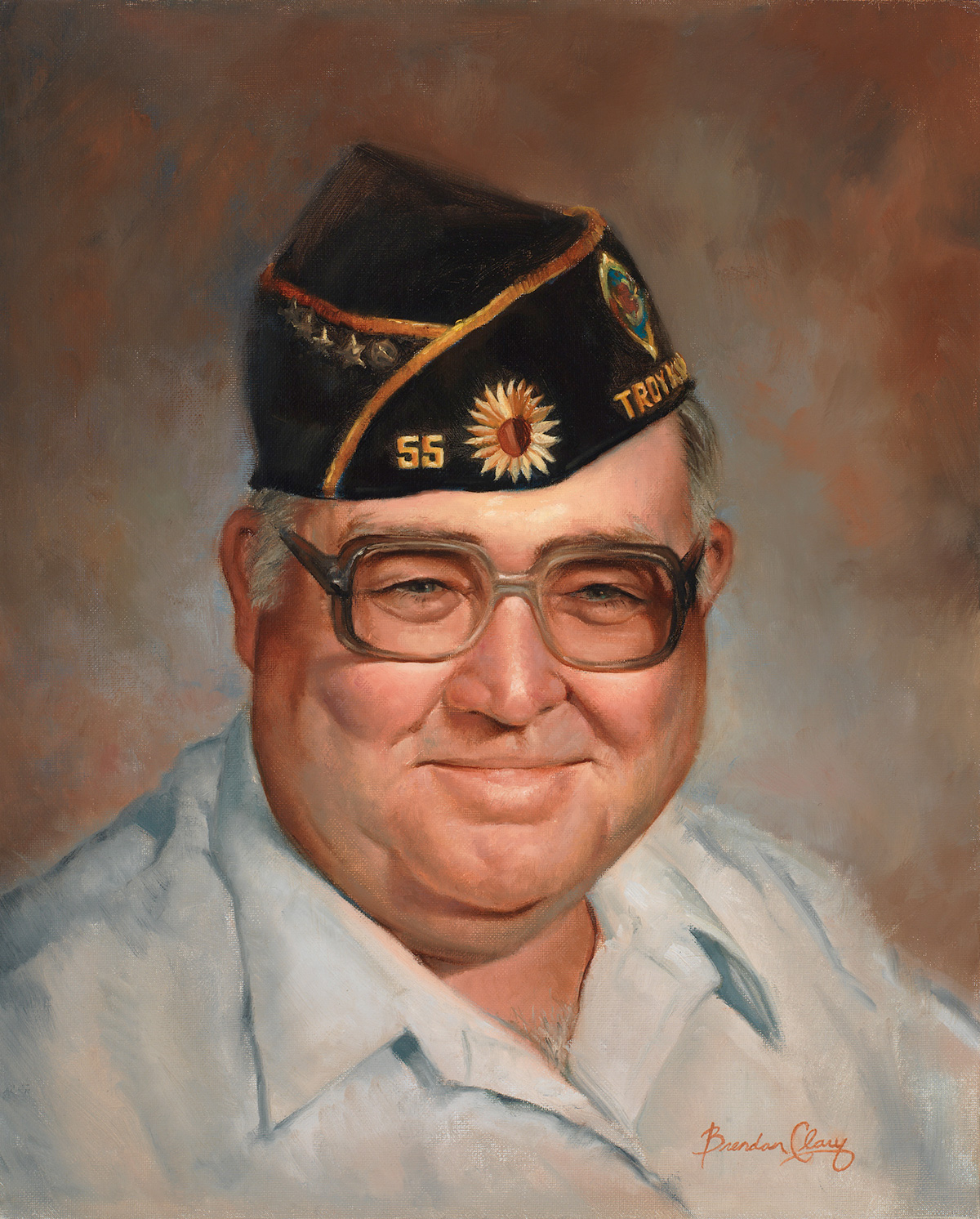
Do you have a favorite project you’ve worked on so far?
It’s really hard to pick favorites. What if my paintings came to life in the middle of the night and got even with me for not picking them?
Generally I find that the painting I love the most is the one I am currently working on. It could be something as simple as a random piece of fruit lying around that I get excited to paint, and then it becomes my favorite thing.
But I will also say that the paintings I get the most attachment to are the ones that I create for a special purpose, like the portrait I mentioned earlier of the little girl—her name is Charlee. There is a special spiritual connection that happens when I’m involved in the process, and it is so rewarding to see the connection the family makes with the portrait because of their love for the individual.
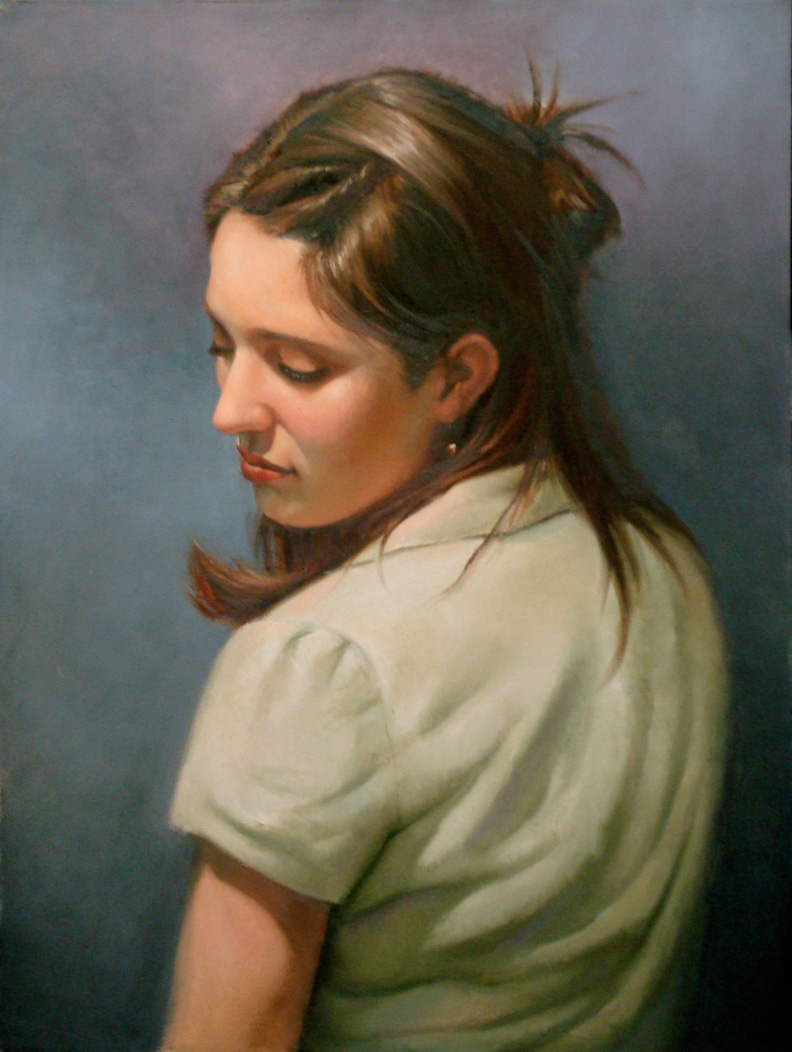
One of your portraits, called Tia, was a top 100 finalist for the Exhibition of Contemporary American Realism. What do you think is unique about this painting?
I’m not sure. Some paintings seem to connect well with people, and some not as much. If I could figure it out completely I’d just do that same kind of thing with every painting. But I do feel that this particular painting was one of my very first portraits that I had invested a great deal of time, effort, and emotion into. Up to that point, it was the best thing I’ve ever done. Somehow the viewer can tell when the artist is making a breakthrough with their own art, and they gravitate to it.
Your charcoal drawing of the First Presidency has also gotten plenty of attention. Would you call it your most popular piece so far?
It has gotten a lot of attention on social media, and I think I’ve sold more prints of this drawing than any other print I offer. I like to attribute this to the love that the Saints have for the First Presidency. When I first drew these portraits, there weren’t very many images if any of the First Presidency other than a few photos. So I think a lot of people appreciated and connected with it as a fine art piece because of their love and devotion to the Lord’s prophets.
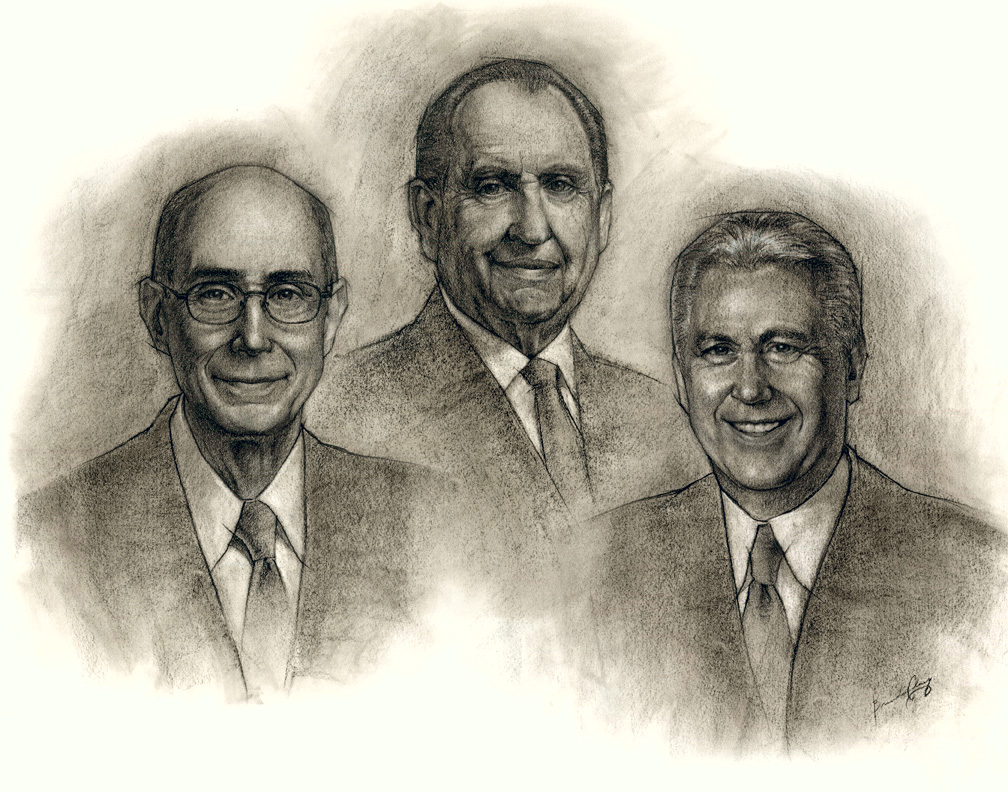
More of your work (works-in-progress, studies, etc.) can be seen on your Facebook page for your art than on your website. What has been the thinking behind that decision?
To be honest, there hasn’t been a whole lot of master planning behind this decision. But generally I have found that it’s much easier to upload little things here and there on social media than to update my website. I also feel that my website should have a professional presentation of finished work.
With the social media, viewers can have an experience of seeing the “artist” in a way. They can see where I’m going, what I’m working on, etc. Whereas on my website they can see the art—the finished product.
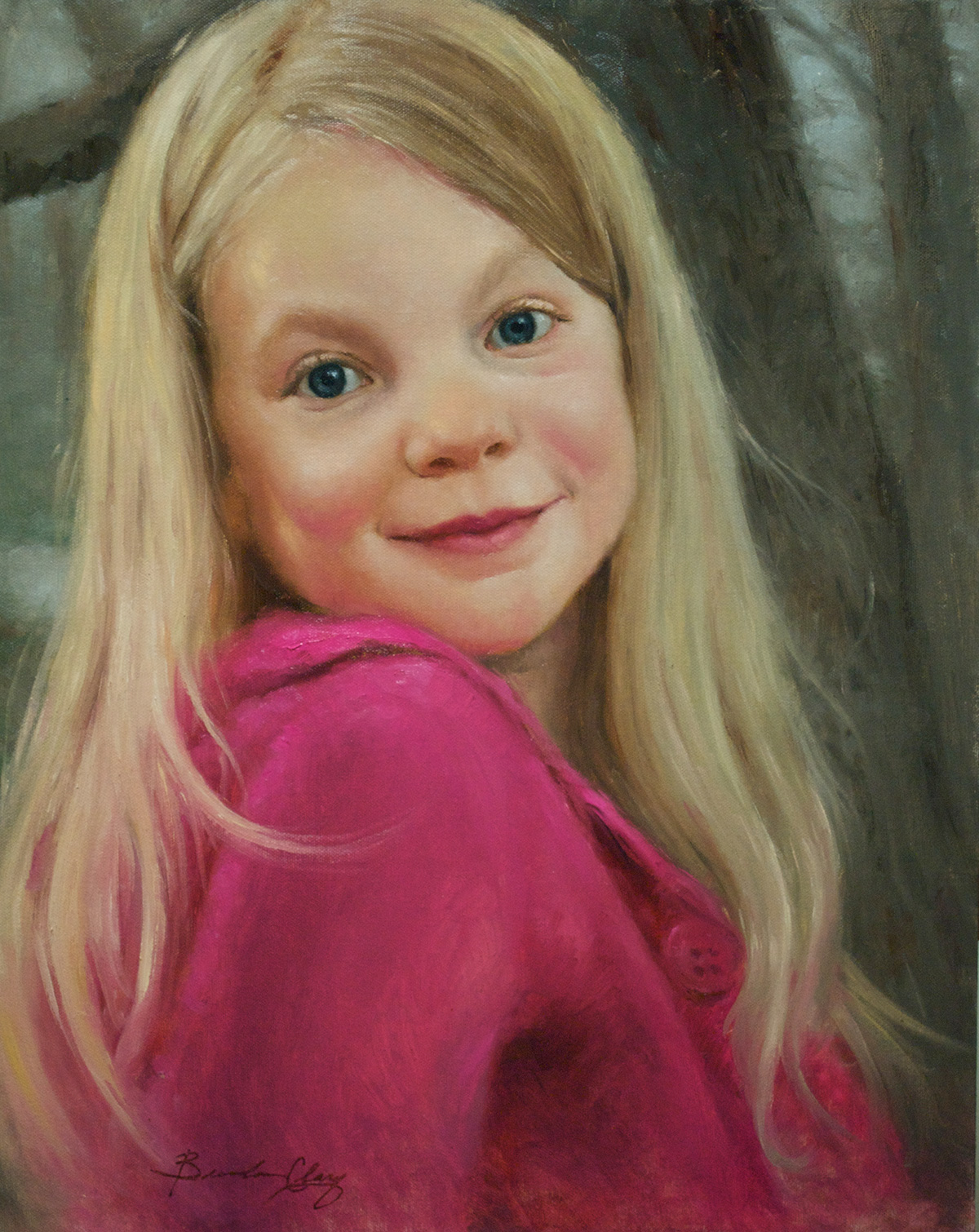
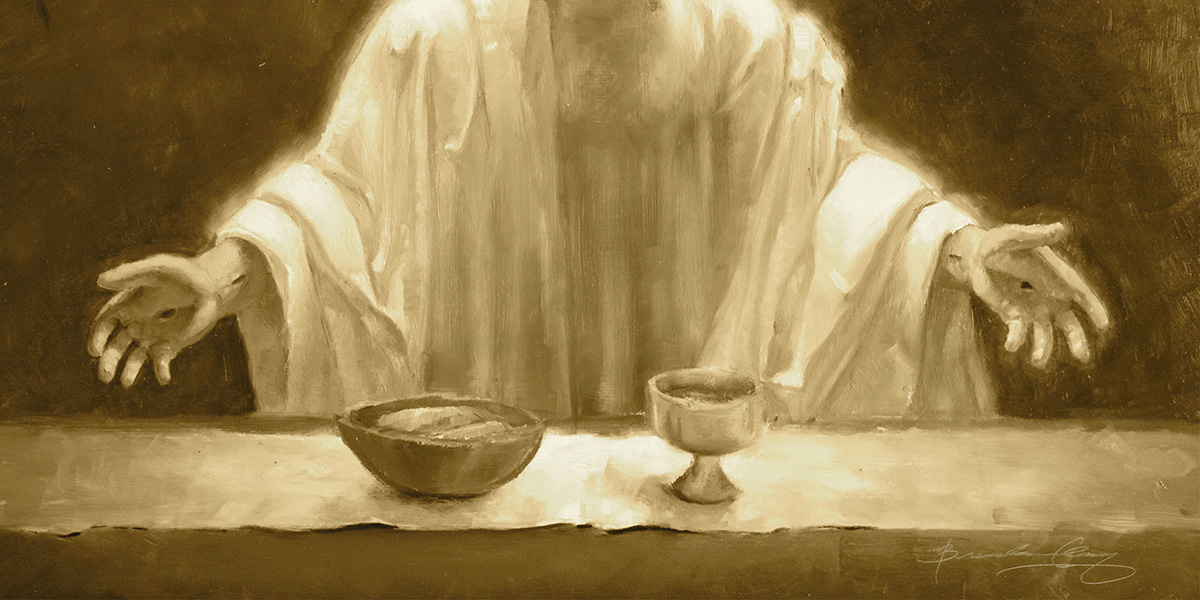
You do both religious and non-religious art—is there a difference in how you approach the two?
I don’t think there is a specific difference in the process. I pray for the Lord’s help in what I do whether I’m trying to paint a religious idea or a bowl of fruit. I think that spiritual significance can be found almost anywhere if we look for it. And I definitely need the Lord’s help in all I do. However, my pleadings are probably a little more earnest when I know that the image I’m working on has greater potential impact on a viewer or if I’m trying to portray a more sacred idea.
In what ways do your art and the gospel overlap?
Many ways. The Lord has given every person specific talents. I think he has given us all different talents so that we can learn to rely on, serve, and appreciate one another. I also believe that all our talents are reflections of God’s own perfect and complete talents. He is the source as our Father in Heaven. So when I look at my art, I regard it as a gift that helps me understand my Heavenly Father and his children better.
I don’t want to bore you with a million different analogies that connect faith with art, but I will offer one. When I start a piece I don’t always know how it will turn out. But I get excited or inspired to work. I trust that if I follow my feelings and do the best I can, a beautiful piece of art will emerge. While painting, I may experience frustrations and make lots of mistakes. It could be easy to feel overwhelmed or discouraged. But the beautiful thing about oil paint is that corrections are easy to make. Even if the piece turns out differently than I originally thought, if I stay the course it will be a treasure. It is the same in life as we learn to trust in the gospel and in our Savior Jesus Christ. We have setbacks, we have frustrations, we may make many mistakes. But the good news of the gospel is that if we do the best we can and keep at it, the Savior’s grace will transform us and our efforts into beautiful works of art. Ultimately we will be transformed into the image and likeness of our Father in Heaven. It is difficult for us to fully realize what that will be like. But if we exercise faith and move forward to that goal, we will be rewarded beyond our comprehension.
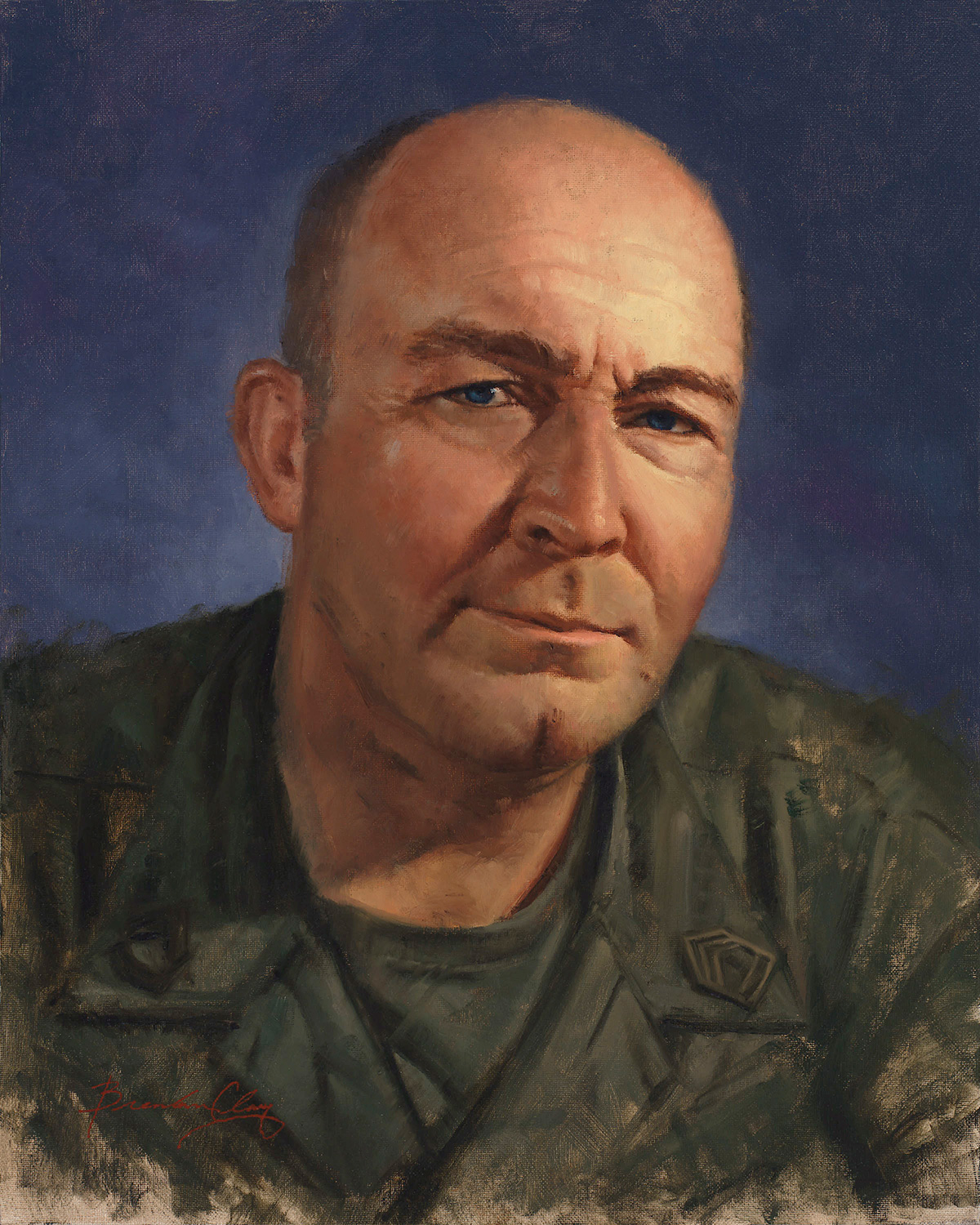
How do you see your talent building the kingdom?
When I paint, I recognize that I am creating art that will be seen by others. Art, like music and words, can have a powerful effect on people. It’s a form of communication. We can choose to communicate things that will uplift and lead people to God, or we can choose to communicate things that lead to pain, hate, or doubt. I seek to create art that can help us see beauty, recognize the divine nature of the human race, and remind us of those things that are most important. Creating religious art has great power to communicate spiritual ideas and feelings. I recently went to the gorgeous show at BYU for Carl Bloch’s work. You look at those images and you feel something incredible. You feel like you know the Savior better because of them. I want to be able to do the same with my art.
Another thought that comes to my mind frequently as I contemplate where my art is headed and what impact it can have on building the kingdom is this: There is still a lot of misinformation about our faith. Some still refuse to believe that we are Christians. If I can create images of the Savior or even of everyday things in such a way that people can be moved by them, then many people will begin to see Mormonism in a different light. I think we see that now with what other artists have been doing in our church already. I am always excited when I see one of Greg Olsen’s paintings of Christ showing up in mainstream Christian outlets, for example.
Beyond this, I am striving to use my talents to bless other people. I believe beautiful art blesses us spiritually. I am so fortunate and feel so grateful to be able to do this as a profession. ❧
